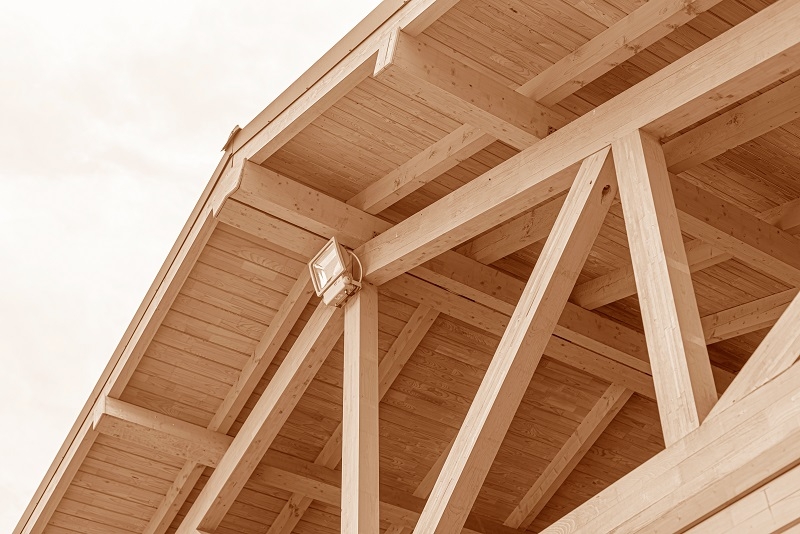Published: 23/08/23 By: Mike Bekin
Timber frame houses have been popular for centuries. Known for its durability and strength, timber is an excellent choice for structures which are designed to stand the test of time. When bringing in expert carpentry skills, it is also one of the most beautiful ways to build a home, with plenty of options to personalise your frame to your style. One such choice is timber joinery, which has both aesthetic and practical benefits.
What is Timber Joinery?
Timber joinery is an age-old art which has been around for thousands of years. Rather than hammering together your timber frame with nails or holding pieces up with glue, you create corresponding shapes in your wood planks which slot together. These areas are usually then secured with wooden pegs or dowels, which slide through holes in the joining planks to create a secure, stable fit.
Why Choose Timber Joinery?
Building an entire frame from timber is a long old process, but one which can be drastically accelerated by opting for timber joinery instead of using nails or glue. By pre-fabricating the timber before delivery, a supplier such as EcoChoice can prepare and test all your wood components away from the construction site in preparation for installation. When it is delivered to you, it is ready to be quickly erected, with all the pieces fitting together like a puzzle.
Fixing with nails, on the other hand, can be a tedious and fiddly process. With thousands to go in and the risk of splitting the wood if not done correctly, it will take a fair bit longer than simply slotting your timber frame together.
Another perk which should not be overlooked is the ability to easily disassemble your timber frame. Simply pull out the wooden pegs and take the frame apart without ruining any of the wood. This is great if you want to make quick alterations or repurpose the timber when the exact house frame design needs to be updated. This makes timber joinery the obvious choice for temporary constructions.
But it is also a smart option for long-term structures. Unlike nails and glue which can corrode over time, your timber joints are going to stay in place for as long as you need them. Strong, durable and dependable, they are a fantastic option when building your home.
Types of Timber Joints
Different types of timber joints are used for different purposes. Just a few which you can look into when constructing your timber frame include:
- Shouldered mortise and tenon joint
- Tongue and groove joints
- Spine joints
- Finial joints
- Dovetail joints
- Rafter peak and ridge joints
Different joinery types have different purposes, making them suitable for certain aspects of the timber frame. For example, shouldered mortise and tenon joints often make up the main load-bearing structure of the frame, whilst finials are largely used for decorative purposes.
Your timber joinery can also be supported by steel casings and fixings, however in most cases this is not necessary.
Choose Sustainable Timber at EcoChoice
If you are on the hunt for timber joinery planks to create your timber frame home, our team can help. With sustainably sourced timber in a wide range of species, we can help you find exactly what you seek. Get in touch today to tell us more about your project and we will let you know how we can help.
Images: Den Rozhnovsky, A. L. Spangler, riwkus / Shutterstock.com
Tags: Contractors, Timber, Timber-frame
Categories: Insights


